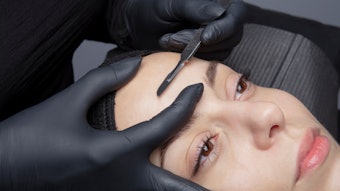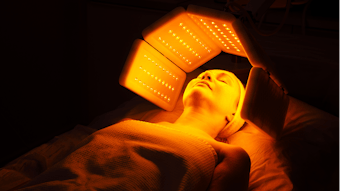
When Mary noticed her skin tightening and thickening uncomfortably on her face and hands, she went to her primary care physician to get answers. There were other symptoms she had noticed, as well, and showed him the small, widened blood vessels near the surface of her skin—telangiectasia. Although Mary had visited a medical spa for several laser treatments to remove them, the telangiectasia always returned. Then there was the mysterious itching that never stopped. Mary could not identify the source, because there were no hives, bites or other visible causes. Her physician recognized that these symptoms could be pointing to the onset of an autoimmune disease and referred her to a rheumatologist. Lab tests were ordered and soon, Mary received the diagnosis of scleroderma.
What is scleroderma?
According to the Scleroderma Research Foundation website (www.srfcure.org), scleroderma, or systemic sclerosis, is a chronic connective tissue autoimmune disease. The word “scleroderma” comes from two Greek words: sclero meaning “hard” and derma meaning “skin.” Hardening and tightening of the skin are two of the most visible manifestations of the disease. Scleroderma, however, can be much more than this. Peripheral vascular damage can occur and, in some cases, the joints and muscles are affected, resulting in a loss of mobility. Scleroderma can produce chronic, complex and debilitating symptoms, often damaging internal organs with life-threatening consequences. Systemic scleroderma can damage the lungs, kidneys and gastrointestinal tract with deadly results. It can create deleterious effects throughout the body, and it falls under the heading of a vascular disease because it can constrict and injure tiny blood vessels. It is identified as a connective tissue disease because it can cause abnormal changes to the skin, tendons and bones and, like many other rheumatic disorders, scleroderma is believed to be an autoimmune disease because it can apparently trigger the body into a state of disregulation.
According to the same site, the course of the disease is unpredictable, and its symptoms and severity vary from one person to another. Women are most commonly afflicted with scleroderma; some estimates suggest as many as four out of every five patients are female, and the disease is most frequent between the ages of 20–50.
Three physicians speak out
As an esthetician, it is important to note that scleroderma is neither contagious nor infectious. Its effects can range from mild to life-threatening. The overproduction of collagen that causes the tightening and thickening of skin on the face and hands can also cause the same thickening and tightening on internal organs, such as the lungs. Prompt and proper diagnosis and treatment by qualified physicians may minimize the symptoms of scleroderma and may lessen the chance for irreversible damage, so if you suspect one of your clients may be experiencing the symptoms of scleroderma, recommend that she see her physician immediately.
Julia Hunter, MD, Beverly Hills, California. Hunter is a Beverly Hills, California-based dermatologist in private practice. Her treatment center, Skin Fitness Plus, utilizes only chirally correct, nontoxic, noninflammatory skin care products, and she employs a holistic dermatology method combining healthy diet, synergistic supplements and bioidentical hormone replacement designed to treat the cause rather than just the symptoms. According to Hunter, “Scleroderma patients are in a highly stressed, inflammatory state, and their skin tends to be very dehydrated.” Organic, chirally correct products, easily absorbed by the skin are what Hunter recommends for all her patients, but especially for scleroderma patients. “With a scleroderma client, estheticians should focus on relaxation, lymph drainage massage and super moisturizing treatments.” Hunter suggests that estheticians proceed cautiously with technology known to have a tightening effect and collagen-boosting treatments, because they can possibly make things worse for a scleroderma client.
Heidi Jacobe, MD, Dallas. Jacobe is a dermatologist who specializes in connective tissue disease, and is an associate professor at the University of Texas Medical Center in Dallas. She explains, “Scleroderma is a complex genetic disease in which patients have an excessive buildup of collagen in the dermis. Although their skin appears to be thickened, it is really dry and fragile, and may not heal well.” Jacobe recommends that estheticians employ nonirritating, deeply hydrating treatments for their scleroderma clients. If there is any concern about a service, treat a small area first and watch for any adverse reactions.
Jacobe cautions that tattoos, especially permanent makeup, should not be administered on scleroderma clients. Changes to the skin as the disease progresses can include severe distortion of the facial features and the hands, and will adversely impact the original tattooed area. Both Jacobe and Hunter say clients can have noncollagen-based fillers and Botox, although it is often not needed, because the skin-tightening that occurs due to the disease often gets rid of small wrinkles.
Jacobe adds that there is a localized form of scleroderma called morphea, which is not as severe or life-threatening. With morphea, there is no internal organ involvement, but it can produce hardening of the skin and hyperpigmented areas. The skin pigmentation as a result of morphea is so deep that it is difficult to bleach effectively. Intense pulsed light (IPL) is currently being used with some success. Estheticians need to be aware that scleroderma skin—whether the scleroderma is systemic or localized—is different skin. If there are any concerns about the products or technology you are using, always try a small area first and then evaluate further treatment.
Robert Simms, MD, Boston. Simms is chief of rheumatology at Boston University School of Medicine. His major research interest is in scleroderma clinical outcome measures and clinical trials. Simms concurs that moisturizing scleroderma skin is important in a spa setting, but points out that there is no topical treatment that will stop the progression of this chronic disease. In fact, there are components of the disease that researchers are finding have more of a neural rather than a dermatological component, such as the overall itching sensation described by Mary.
Fillers may also be advised for scleroderma patients as the skin tightens and purses uncomfortably around the mouth, creating deformity. “Technology that increases collagen is not necessarily a bad thing, either,” says Simms. “However, the jury is out and there is no real data yet on any of these treatments for scleroderma patients.” Proceed with caution, and test on just a small area before treating the entire face, neck and hands.
An earlier diagnosis
There are an estimated 350,000 people in the United States who have scleroderma, about one-third of whom have the systemic form. Since scleroderma presents with symptoms similar to other autoimmune diseases, diagnosis is challenging, and there may be many misdiagnosed or undiagnosed cases, as well. All three physicians agree that the relationship estheticians have with their clients can lead to an earlier diagnosis. If you notice a hardening and tightening of your client’s skin, telangiectasia that return after treatment, or telangiectasia on the palms or the mucous areas of the mouth, advise your client that they may need to be evaluated by a rheumatologist. In the case of scleroderma, an often difficult to diagnose disease, an informed esthetician can be the first line of defense—and perhaps even a life-saver.
At the present time, there is no cure for scleroderma, but there are medications available that treat symptoms. Some treatments are directed at decreasing the activity of the immune system. Clients with a mild form of the disease may not need medication at all and, occasionally, people can stop treatment when their scleroderma is no longer active. Because there is so much variation from one person to the next, there is great variation in the treatments prescribed.
Clinical trials for experimental treatments are ongoing, and there may be good news on the way for clients like Mary. Simms says that there are new treatments in the pipeline for scleroderma that may reverse the effects of the disease and have the potential to cure it altogether.
More Information About Scleroderma
For additional information about scleroderma, contact:
Scleroderma Foundation
300 Rosewood Drive, Suite 105
Danvers, MA 01923
978-463-5843
www.scleroderma.org
Scleroderma Research Foundation
220 Montgomery St., Suite 1411
San Francisco, CA 94104
800-441-2873
www.srfcure.org











